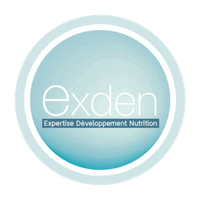 This is the 100th blog post! And to celebrate, nothing better than sharing 100 concepts to know about the different subjects of our profession: the intestinal microbiota, probiotics and prebiotics.
This is the 100th blog post! And to celebrate, nothing better than sharing 100 concepts to know about the different subjects of our profession: the intestinal microbiota, probiotics and prebiotics.
Concepts about the intestinal microbiota
1.The most talked about microbiota is the intestinal microbiota
2.However, there are other microbiota: oral, skin, vaginal, pulmonary
3.Nevertheless, 95% of our bacteria are concentrated in the gastrointestinal tract
4.The gut microbiota is made up of about 100,000 billion microorganisms
5.Which represents almost 10 times the number of human cells
6.These bacteria are 10 to 50 times smaller than our cells
7.Bacteria, fungi, viruses and parasites are the main constituents of the microbiota
8.There are on average 800 to 1000 different bacterial species in the gut microbiota
9.Contains nearly 3.3 million genes
10.Meaning 150 times more genes than the human genome
11.Its mass is estimated at 1-2 kg
12.It is acquired at birth, due to the immaturity of the newborn’s immune system
13.Everyone’s microbiota is unique, it can be likened to an identity card or a fingerprint
14.This is explained by the fact that one third of the microorganisms making up the microbiota are common to all, while the remaining two thirds are specific to each
15.It is at the age of 2-3 years that the intestinal microbiota is considered mature
16.Its wealth and diversity can be affected by many factors
17.Indeed, diet, mode of delivery, gestational age, maternal flora, lifestyle, taking medications influence the composition of the intestinal microbiota
18.It is relatively stable over time, although it may evolve transiently
19.Within the intestinal microbiota, there is a dominant microbiota composed of bacteria that thrive in the absence of oxygen (99% of bacteria in the digestive tract are affected); a sub-dominant microbiota made up of bacteria which can develop in the presence and / or absence of oxygen, and a transient microbiota, where microorganisms are generally provided by food (fermented foods, dietary supplements based on probiotics, etc.)
20.The diversity and number of microorganisms present in the digestive tract varies considerably from mouth to colon
21.The maximum concentration of microorganisms is in the colon
22.These differences in colonization depend on the environment conditions of the digestive tract: oxygen, pH, transit time, bioavailability of nutrients, etc.
23.The intestinal microbiota is important for our health thanks to metabolic, trophic and defense functions
24.It acts on the essential metabolisms of digestion: carbohydrate, lipid and protein metabolisms
25.It ferments the undigested part of the alimentary bolus at the exit of the small intestine in the colon
26.This fermentation generates gases and benefic metabolites such as short-chain fatty acids (butyrate, propionate, acetate) which are real nutrients for colon cells
27.In addition, these short-chain fatty acids improve digestive comfort and provide energy
28.The intestinal microbiota also participates in the synthesis of certain vitamins such as vitamin K and group B vitamins
29.It acts on the maturation of the digestive tract such as the thickness of the intestinal mucosa, the size of the villi, the production of mucus, etc.
30.It is essential in the maturation of the intestinal immune system
31.It is a barrier, making it possible to limit the adhesion and spread of pathogens within our body
32.It also develops cellular and humoral responses adapted to aggression, aimed at protecting us
33.Indeed, almost 70% of the immune system is hosted in our intestines
34.The intestinal microbiota also houses nearly 200 million neurons, which form the enteric nervous system
35.This earned him the designation of “second brain”
36.A close link exists between the intestinal microbiota and the brain
37.They both communicate in a variety of ways: blood, immune, endocrine, and nerve ways
38.The intestinal microbiota is a balanced ecosystem that is constantly self-regulating
39.This balance can be upset under if the intestinal microbiota is attacked. This is dysbiosis
40.It results, among other things, in intestinal hyperpermeability: the intestine is altered and allows the passage of undesirable molecules in the bloodstream which can potentially lead to pathologies
41.This is due to the fact that the tight junctions no longer fulfill their role: the intestine is then like a sleve whose meshes have become too large…
42.Dysbiosis can have many causes: bacterial, viral or parasitic infections, abrupt change of environment, immune deficiency, unsuitable diet, medication, etc.
43.This imbalance can cause intestinal discomfort: transit problem, diarrhea, constipation, etc.
44.But also, be responsible for digestive pathologies such as IBD (Inflammatory Bowel Diseases)
45.Or extra-digestive pathologies like allergies, metabolic disorders (diabetes, obesity) …
46.It is possible to consume probiotics and prebiotics to restore the intestinal microbiota
Prebiotics
47.Prebiotics are non-digestible fibers from our diet
48.These are mainly short chain carbohydrates
49.Their goal is to selectively stimulate the bacteria making up the intestinal microbiota, such as Bifidobacteria
50.Prebiotics then serve as a substrate for beneficial bacteria which will ferment them in order to transform them into short-chain fatty acids
51.They also help increase the weight of stools and improve their consistency
52.Many other benefits can be granted to them: improved calcium absorption, prophylactic effect against allergies or diabetes, protection against gastrointestinal infections, etc.
53.Inulin and fructo-oligosaccharides are the most represented prebiotics in our diet quantitatively
54.They are contained in certain fruits and vegetables (bananas, chicory, chicory, etc.) and in certain cereals (wheat, rye, etc.)
55.Other prebiotics exist, such as galacto-oligosaccharides, a component of breast milk
Probiotics
56.Consuming probiotics is also possible to rebalance the intestinal microbiota
57.According to WHO, they are living microorganisms which, when ingested in sufficient quantity, have beneficial effects on health
58.Certain “dead” probiotics (tyndallized probiotics) can also act positively on our health
59.Probiotics help maintain the balance, integrity and diversity of the intestinal microbiota
60.However, not all microorganisms are probiotics. They must meet a number of criteria
61.Security criteria: such as identification, included in a list, deposit in a collection, etc.
62.Functional criteria: such as resistance to stomach acid, digestive enzymes, bile; adhesion to mucus and / or epithelial cells; persistence in the gastrointestinal tract…
63.Technological criteria: they must be stable and viable in the finished product while retaining their health benefits
64.Probiotics are divided in different categories: lactic ferments capable of transforming carbohydrates into lactic acid (such as Cockles, Lactobacilli and Bifidobacteria); yeasts (such as Saccharomyces cerevisiae boulardii); spore-forming probiotics, capable of withstanding extreme conditions (Bacillus coagulans for example)
65.Their name is composed first of the genus (written with a capital letter), followed by the species and then the strain. The genus and the species must be in italics (example: Lactobacillus rhamnosus GG)
66.The most well-known probiotic that has been the subject of the greatest number of scientific studies is Lactobacillus rhamnosus GG
67.The most studied yeast is Saccharomyces cerevisiae boulardii
68.Probiotics can be found in lacto-fermented products such as certain dairy products, pickles, sourdough bread, fermented drinks such as kefir or kombucha…
69.In fact, only milk fermented by these two probiotics can be called “yogurt”: Lactobacillus bulgaricus and Streptococcus thermophilus
70.Probiotics can also be consumed in the form of food supplements
71.There are even supplements or croquettes with probiotics for our 4-legged friends
72.The properties of a probiotic depend on the strain
73.As a result, not all strains have the same benefits
74.Probiotics produce their effects according to different mechanisms of action. They act by competition for the sites of adhesion or for the nutrients, by production of bacteriocin, by reinforcing the barrier effect of the intestinal microbiota and by stimulating the immune defenses
0375.They confer numerous benefits on the host health by rebalancing the intestinal microbiota
76.They strengthen the barrier function of our body
77.They improve intestinal ecology, whether in bacterial richness or diversity
78.Some have immunostimulatory effects
79.Some improve the symptoms linked to metabolic syndromes (obesity, diabetes, inflammation)
80.Some improve the allergic state (atopic dermatitis, allergic rhinitis, food allergy)
81.Some others protect against certain respiratory, gastrointestinal, vaginal, Helicobacter pylori infections, etc.
82.They act on intestinal comfort thanks to the improvement of many symptoms: bloating, diarrhea, constipation, intestinal pain, transit, etc.
83.They allow an improved digestion of lactose
84.Some decrease the risk of developing chronic inflammatory bowel disease (Crohn’s disease, ulcerative colitis)
85.Some decrease the cholesterol level
86.Some impact mood, anxiety, stress and cognition
87.Probiotics have many other specificities, but unfortunately, 100 points would not be enough to list them all!
88.Probiotics follow a 5-step manufacturing process
89.The first step is the strain selection
90.The second step consists in carrying out pre-cultures: the strain is transplanted or not in a selective medium
91.The third step is the selected strain culture: the preculture is inoculated in a first fermenter, the content of which will then be conveyed to another fermenter
92.Several factors should be considered during this step such as temperature, acidity, aeration and agitation
93.Harvesting is the fourth production step: the manufactured biomass is recovered by centrifugation, which allows the bacteria and metabolites to settle in the culture broth. The result is like a “cream”
94.The last step consists in drying the ferments by lyophilization
95.Lyophilization is a dehydration operation passing through a rapid freezing step followed by drying where the crystallized water is sublimated
96.After drying, the ferments are in the form of a “cake”, which will be crushed in order to obtain a powder
97.Many precautions must be taken during the various steps of the manufacture of probiotics in order to ensure their stability and viability, because they are living ingredients
98.At the regulatory level, it is not authorized to note the term “probiotic” on product packaging in certain European states, because considered as a generic claim
99.They therefore have other names on the packaging of products that you can buy: lactic ferments, microbiotic strains …
100.The unit corresponding to the probiotics which is to be annotated on the label is CFU for Colony-forming Unit
LC



